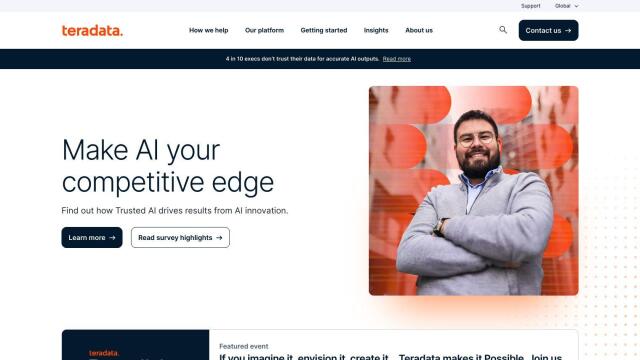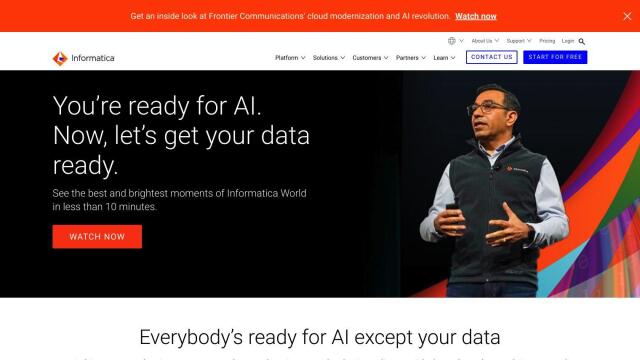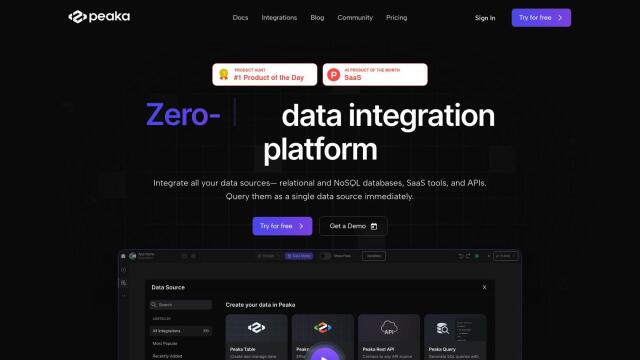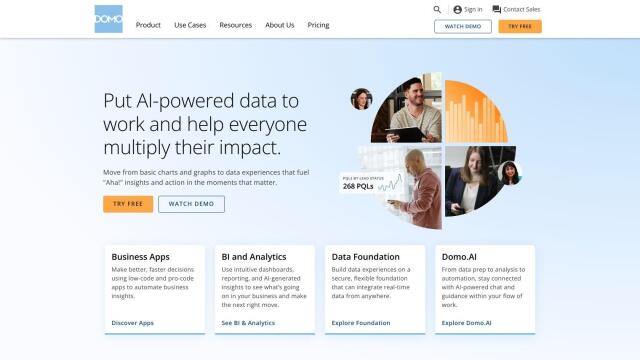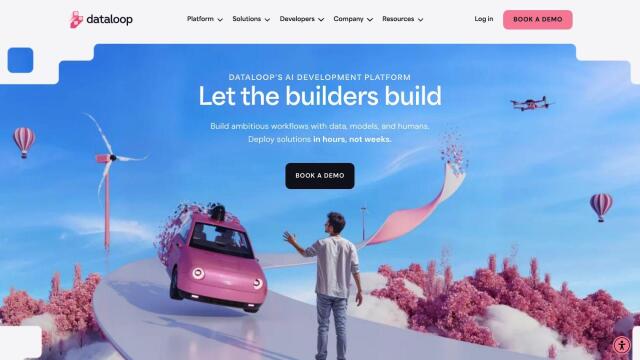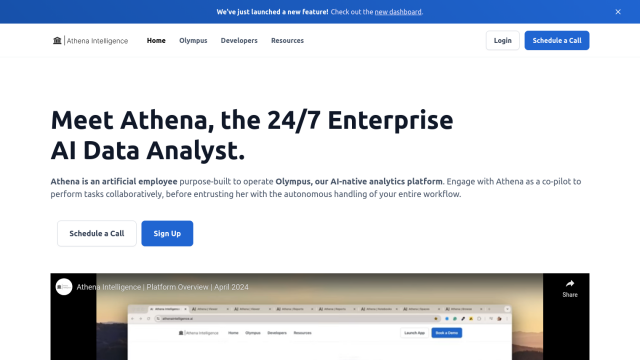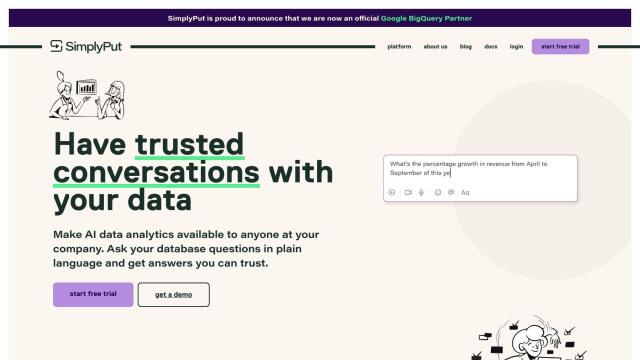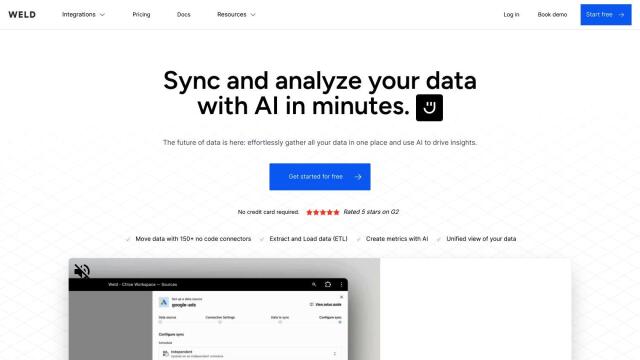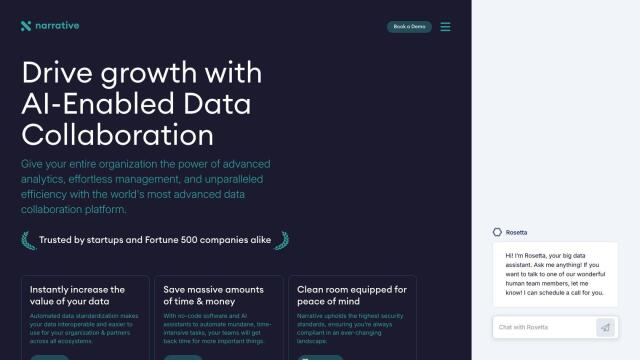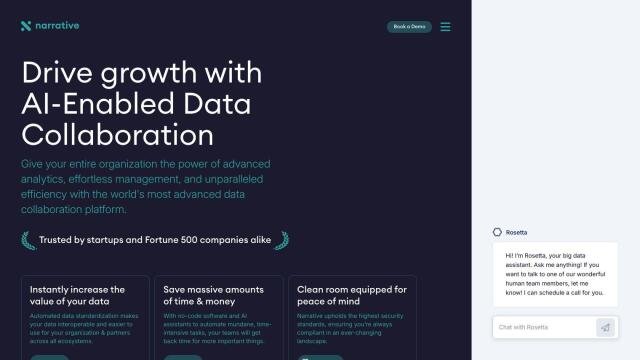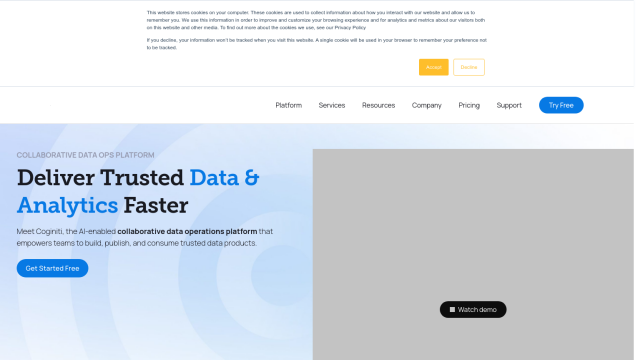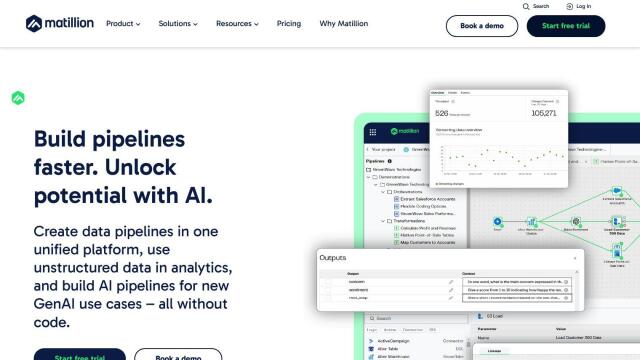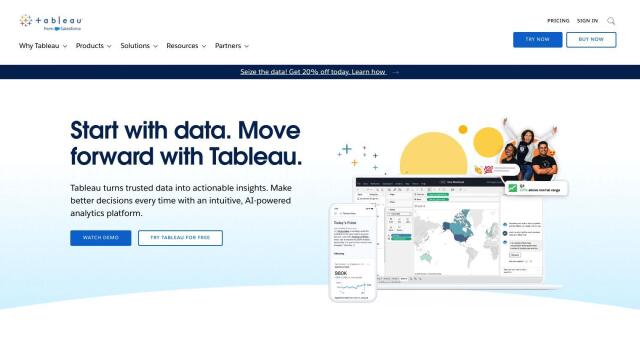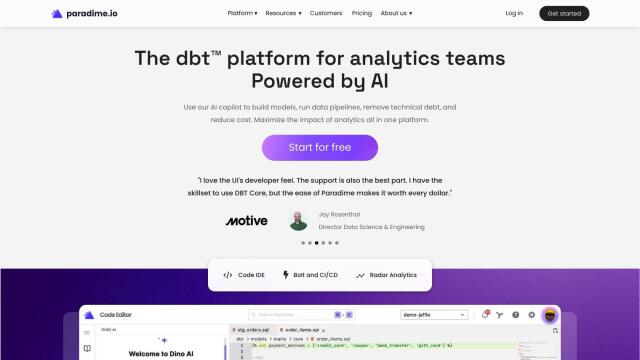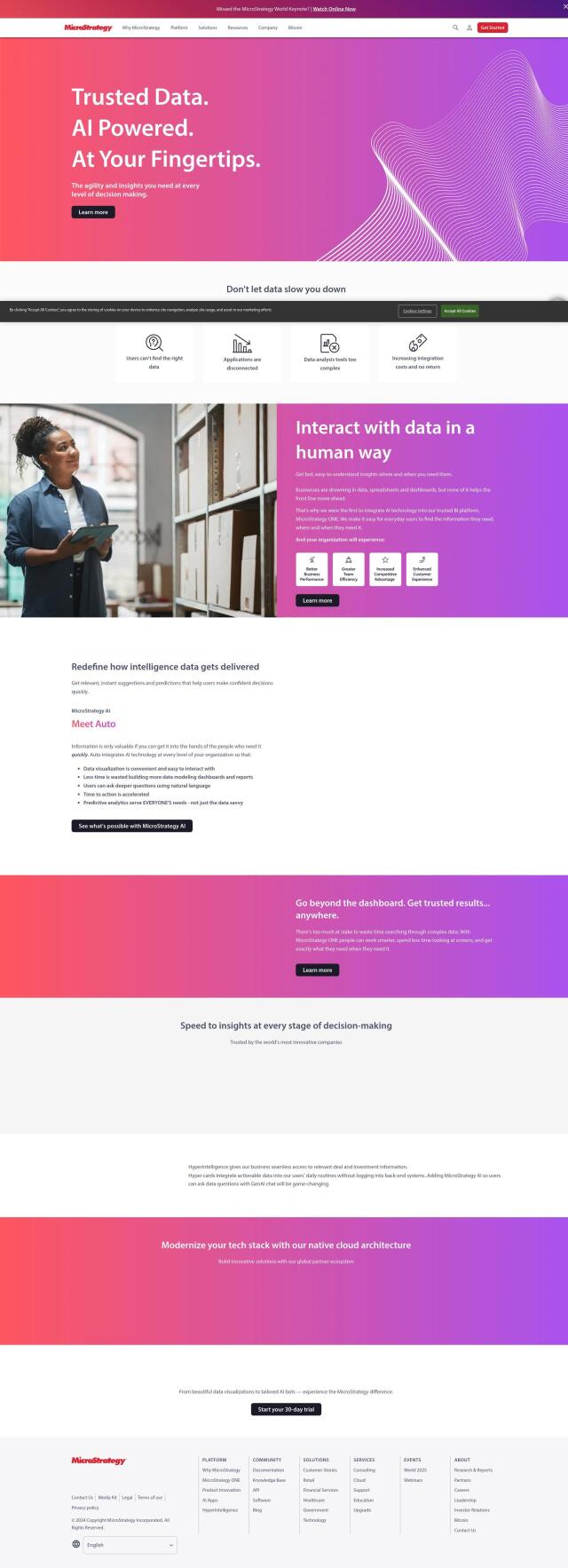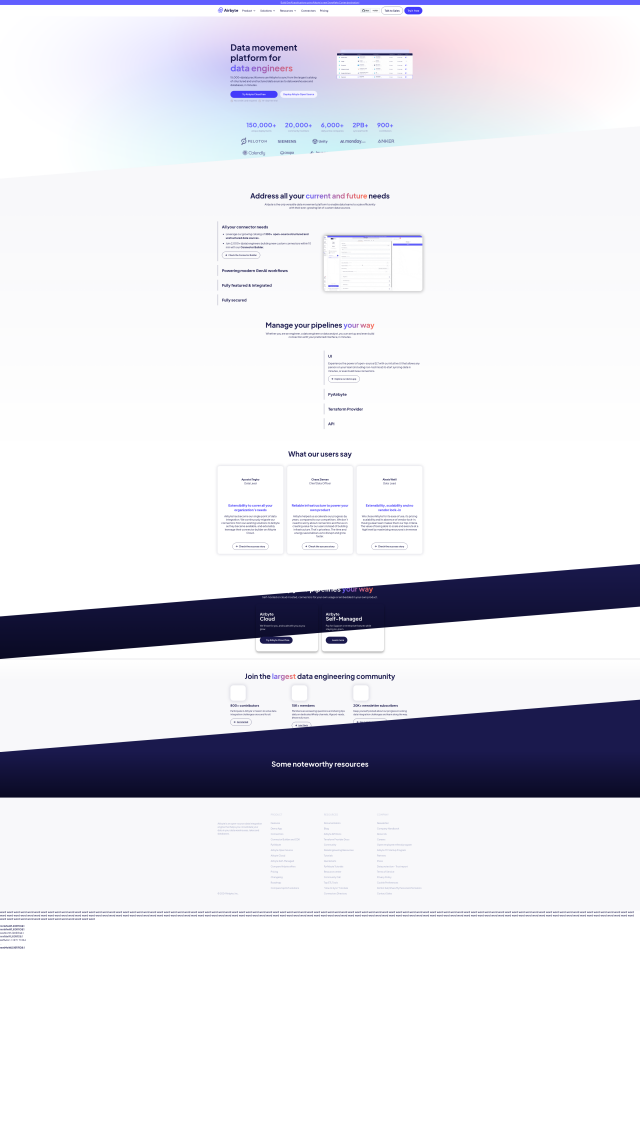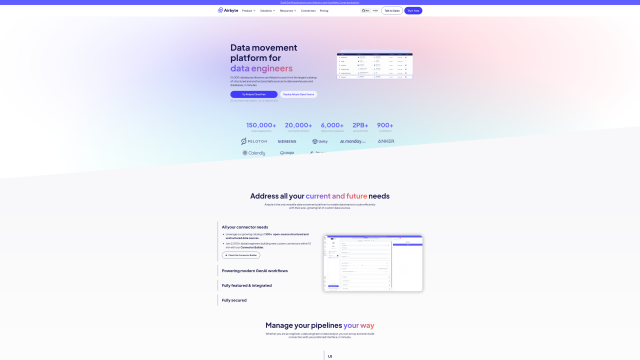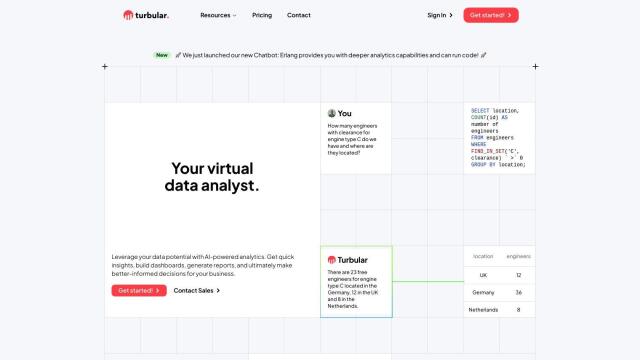Question: I need a solution that integrates with my entire data infrastructure to provide a unified view of my business data.

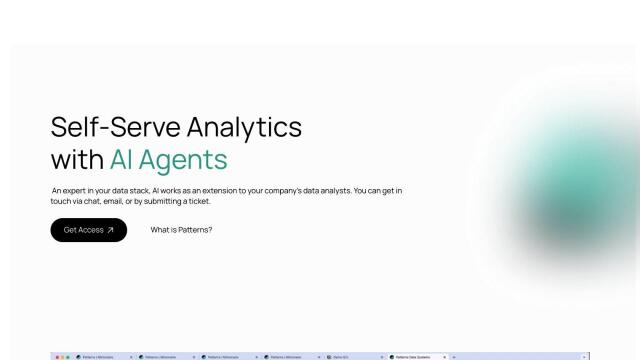
Patterns
If you're looking for a solution that integrates with your entire data infrastructure to provide a unified view of your business data, Patterns is a great option. This information retrieval system uses large language models like GPT4 to accelerate data analysis by generating SQL, charts, and interpreting data results. It learns your business context and generates responses, including SQL and charting code, through a natural language interface. Patterns integrates with the entire data infrastructure, making it a great option for startups, enterprises, agencies and developers.

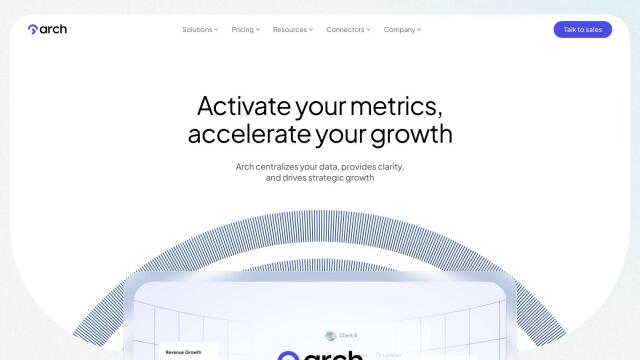
Arch
Arch is another powerful option designed to simplify operations and accelerate decision-making. This end-to-end data platform offers SQL and API access, a semantic layer for unified data modeling, and customizable templates for data ingestion and table definitions. It includes a multi-tenant data warehouse built on Hydra and auto-provisioning for ELT orchestration and data warehouses. This makes it easy to manage multiple customers and integrate different data sources, providing a unified view of key metrics.

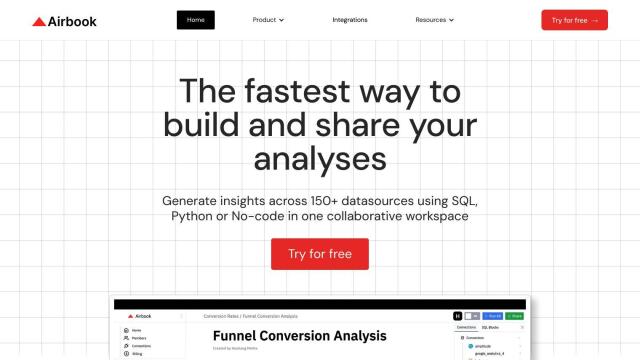
Airbook
For a collaborative data workspace, check out Airbook, which can connect to over 150 data sources with native connectors. It also includes features like querying data with SQL, Python, or no-code interfaces, collaborative workspaces, visualization, and query saving and reuse. Airbook has a wide range of integrations and is great for use cases like marketing analytics, sales analytics, and financial analytics, so teams can make more data-driven decisions.

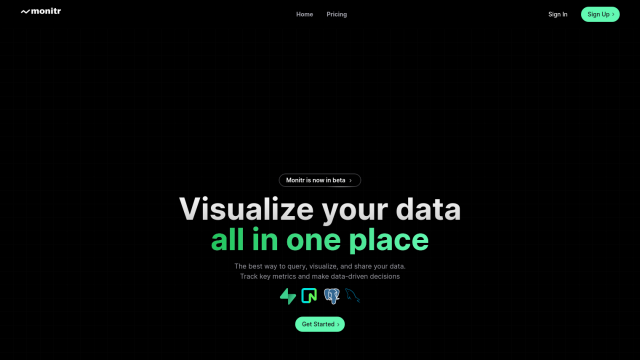
Monitr
Last, Monitr is a cloud-based data visualization and analytics platform that offers a single, unified view of data across multiple sources. It can connect to multiple data sources like Supabase, Postgresql and MySQL, and taps into Meta AI's Llama 3 LLM for powerful analytics tools. Monitr also includes collaborative SQL querying, chart and dashboard creation, and supports unlimited database connections and dashboards, making it a great option for centralizing and managing data.

